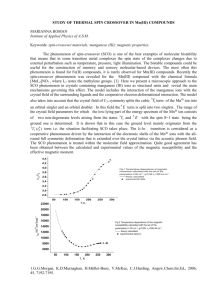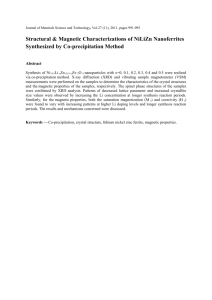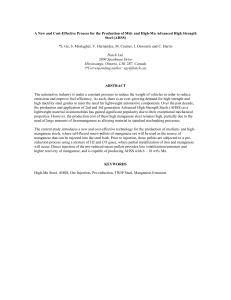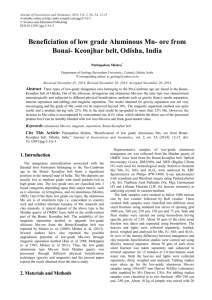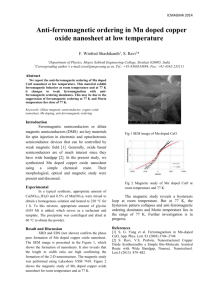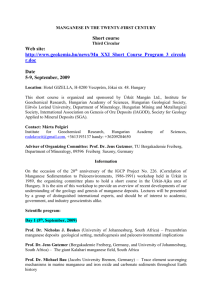Media Release
advertisement
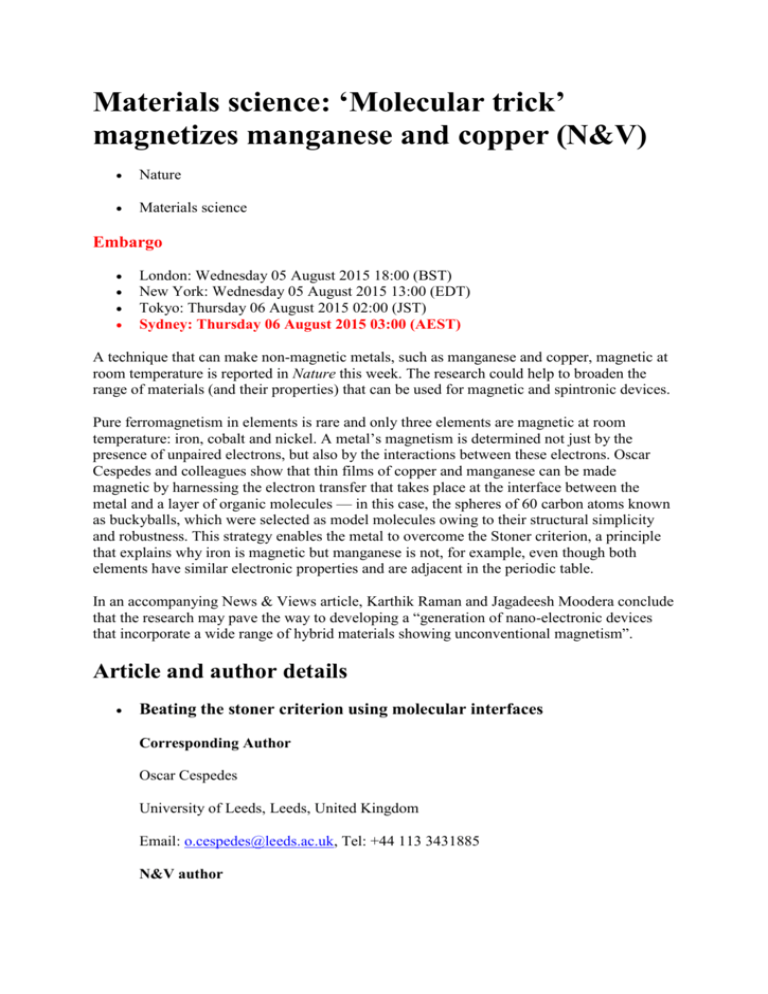
Materials science: ‘Molecular trick’ magnetizes manganese and copper (N&V) Nature Materials science Embargo London: Wednesday 05 August 2015 18:00 (BST) New York: Wednesday 05 August 2015 13:00 (EDT) Tokyo: Thursday 06 August 2015 02:00 (JST) Sydney: Thursday 06 August 2015 03:00 (AEST) A technique that can make non-magnetic metals, such as manganese and copper, magnetic at room temperature is reported in Nature this week. The research could help to broaden the range of materials (and their properties) that can be used for magnetic and spintronic devices. Pure ferromagnetism in elements is rare and only three elements are magnetic at room temperature: iron, cobalt and nickel. A metal’s magnetism is determined not just by the presence of unpaired electrons, but also by the interactions between these electrons. Oscar Cespedes and colleagues show that thin films of copper and manganese can be made magnetic by harnessing the electron transfer that takes place at the interface between the metal and a layer of organic molecules — in this case, the spheres of 60 carbon atoms known as buckyballs, which were selected as model molecules owing to their structural simplicity and robustness. This strategy enables the metal to overcome the Stoner criterion, a principle that explains why iron is magnetic but manganese is not, for example, even though both elements have similar electronic properties and are adjacent in the periodic table. In an accompanying News & Views article, Karthik Raman and Jagadeesh Moodera conclude that the research may pave the way to developing a “generation of nano-electronic devices that incorporate a wide range of hybrid materials showing unconventional magnetism”. Article and author details Beating the stoner criterion using molecular interfaces Corresponding Author Oscar Cespedes University of Leeds, Leeds, United Kingdom Email: o.cespedes@leeds.ac.uk, Tel: +44 113 3431885 N&V author Karthik Raman Tata Institute of Fundamental Research, Hyderabad, India E-mail: kvraman@tifrh.res.in DOI 10.1038/nature14621 Online paper* http://nature.com/articles/doi:10.1038/nature14621 * Please link to the article in online versions of your report (the URL will go live after the embargo ends).

